Saturday 20th April 2024

The Office of Rail and Road (ORR) are at pains to point out on its website how its statistics on rail station usage can only be estimates: “as Great Britain does not have a fully gated rail network, a complete recording of passenger flows through stations is not possible, so some estimations are made to reach the final figures.” For those wanting more information there’s a detailed “Estimates of station usage quality and methodology report” as well as a list of “frequently asked questions” (and answers).
The principal data sources used by the ORR include LENNON (the rail industry’s ticketing and revenue system), TfL data from Oyster/contactless usage and local ticketing data from Passenger Transport Executives.
The Report specifically adds this comment regarding the Elizabeth line concerning “an overstatement adjustment”: “Since the opening of the central section of the Elizabeth line, there has been a known issue with LENNON overestimating contactless and Oyster Pay As You Go (PAYG) journeys on the Elizabeth line. To correct for this we have used data supplied by Transport for London (TfL) as a direct replacement for these ticket types in the LENNON data.”
Which brings me to Tottenham Court Road which came in at seventh place in the list of most used railway stations in the year ended March 2023.
Bearing in mind the station didn’t exist as a National Rail station until opening (on 24th May 2022), just over seven weeks after the 12 month period for which these statistics began (1st April 2022), and it only has one railway line serving it, albeit a very busy one, it does seem surprising that Tottenham Court Road has achieved such a high placing. As we’ve seen in the three previous blogposts, it’s above Euston, Farringdon (which has Thameslink as well as the Elizabeth line) and St Pancras.
The ORR estimate Tottenham Court Road saw 34,877,768 passenger entries or exits including those interchanging with the Central and Northern Underground lines which would presumably count as an exit or entry, but would be difficult, indeed, impossible to track if passengers are using paper London Travelcards rather than PAYG tapping.
Furthermore, although Tottenham Court Road is listed as a station in the National Rail database, you can’t buy a single or return ticket to it from any other National Rail station. Instead stations within a certain radius (eg as far north as Crewe, Wilmslow, Sheffield, Retford) offer a London Travelcard while stations further north (eg Manchester Piccadilly, York) offer no fares or tickets to Tottenham Court Road at all.
Consequently when passengers, including myself paying a visit to take the photographs included in this blogpost and purchasing a London Travelcard, can only be determined by carrying out very rough estimating as even if gateline numbers are monitored it’s not known whether I’ve arrived (or leaving) on the Elizabeth line or the Central/Northern Underground lines which share the same entrance/exit and gateline at the junction with Oxford Street.

So it’s all a bit speculative and full of estimations but nevertheless there’s no doubt it’s a busy station with its greatly expanded entrance/exit on the corner of Tottenham Court Road and Oxford Street and a smart new entrance/exit under the watchful eye of Centre Point.
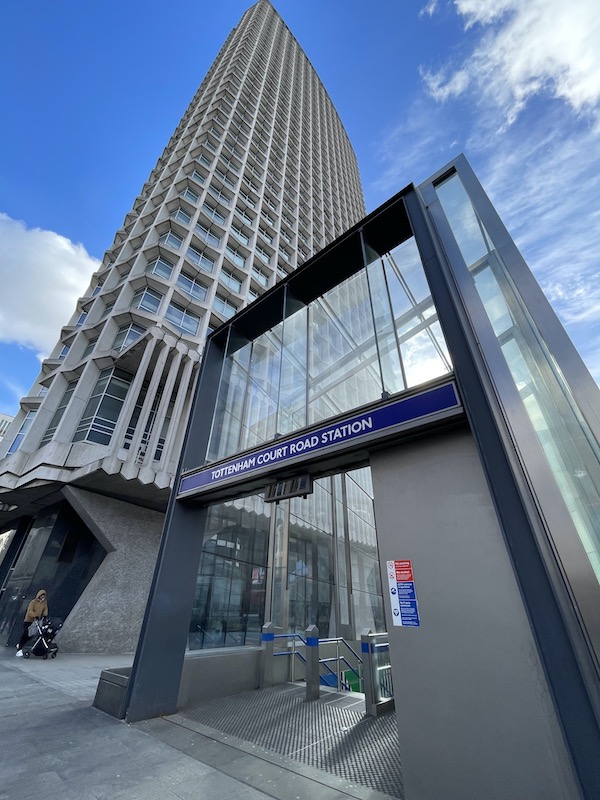
The expanded ticket office area includes a lift just beyond a wide gate – which was proving very popular when I visited.

The first escalator taking passengers down to the Elizabeth line platforms is clearly marked with an arrow pointing downwards, but until a few weeks before the line opened in May 2022…
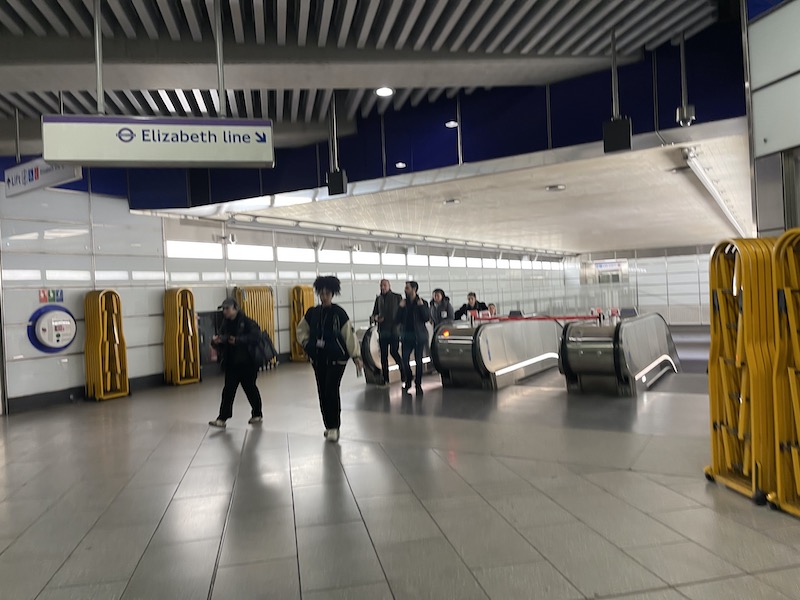
… it was still under the impression it was going to be called Crossrail with an arrow pointing upwards.


As with all Elizabth line stations in the central core, the escalators are looooooong…

… and split into two with a landing (where you can access the Northern line) some rather natty lighting and a red wall before another corridor and another escalator. If you prefer, there are two lifts.
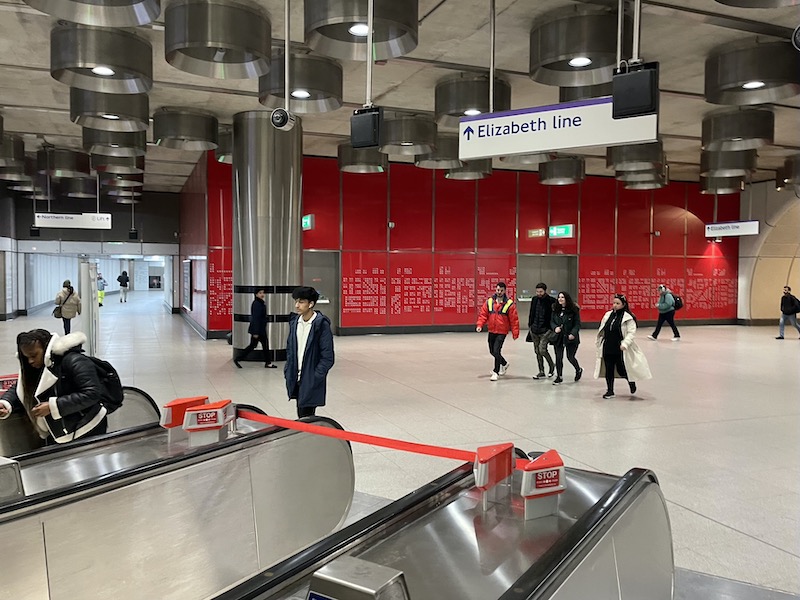
The Elizabeth line part of the station also has another entrance/exit along Oxford Street at Dean Street at the western end of the platforms.
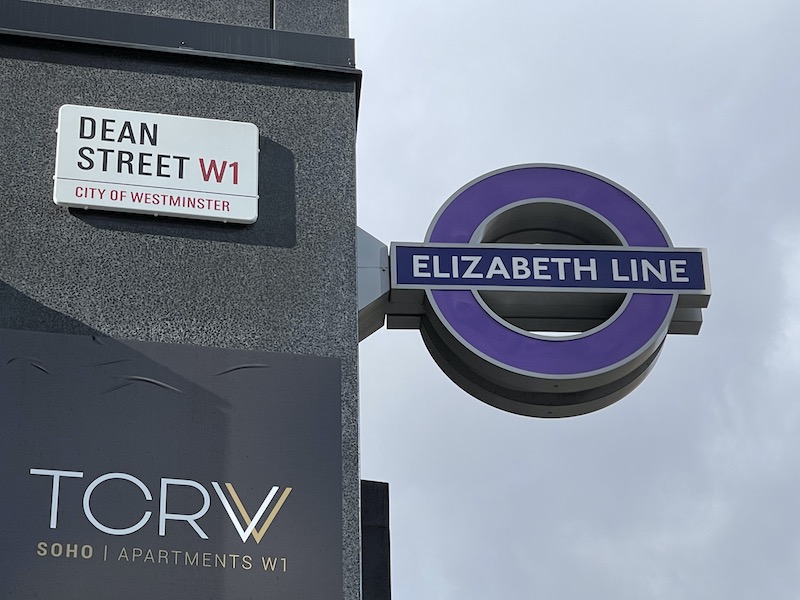
It’s a smaller affair than the one at the eastern end…

… with less ticket machines but a substantial gateline…

… and a lighting display which will keep electricians busy when the bulbs all eventually need replacing.
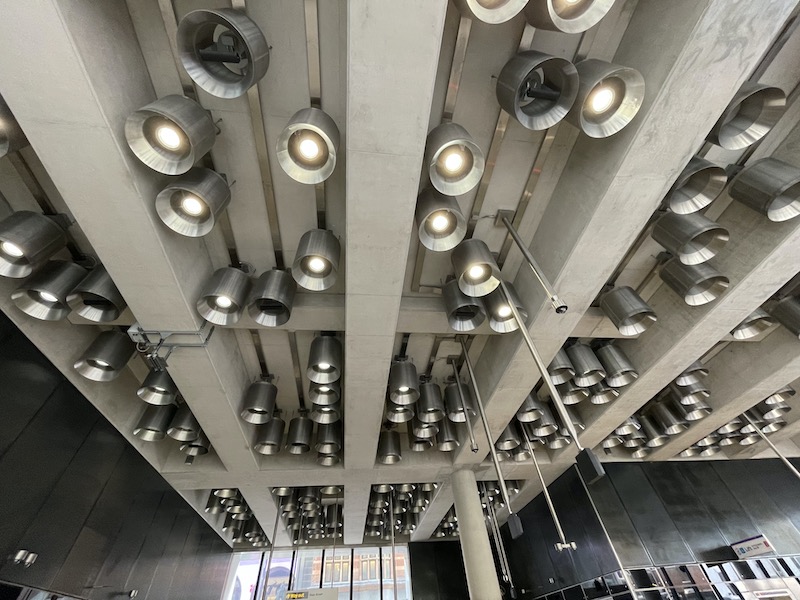
I hope they’ve worked out how they’re going to change the ones above the escalators.

Elizabeth line stations like their corridors and, unlike we saw at Farringdon, at the bottom of the escalators this one clearly shows which side passengers need to go for eastbound or westbound trains…
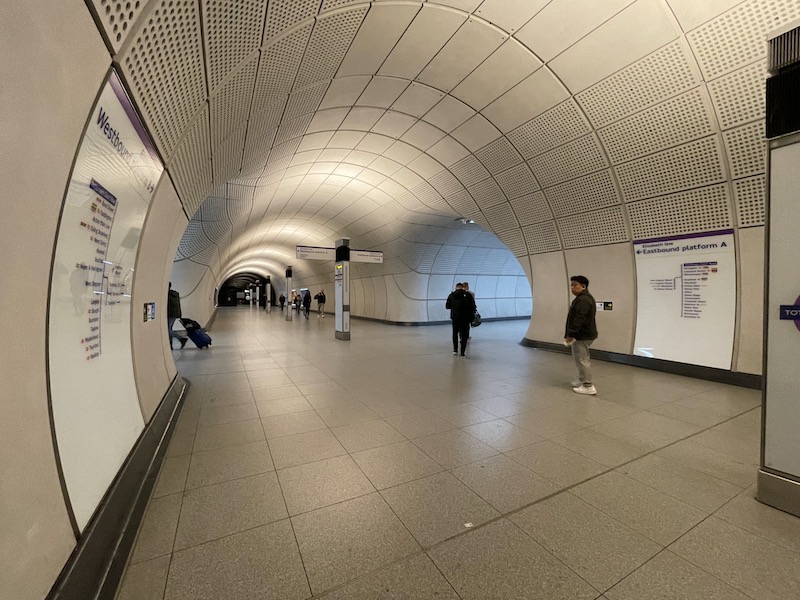
…rather than keep it a secret until you’ve passed further down the corridor.

The comparison with the passageways and platforms for the Northern and Central lines is stark.

And, that’s about it for Tottenham Court Road. Make sure you know which end of the station you want to exit (Dean Street or Tottenham Court Road itself) if you want to avoid an unnecessary walk along the platform on arrival.
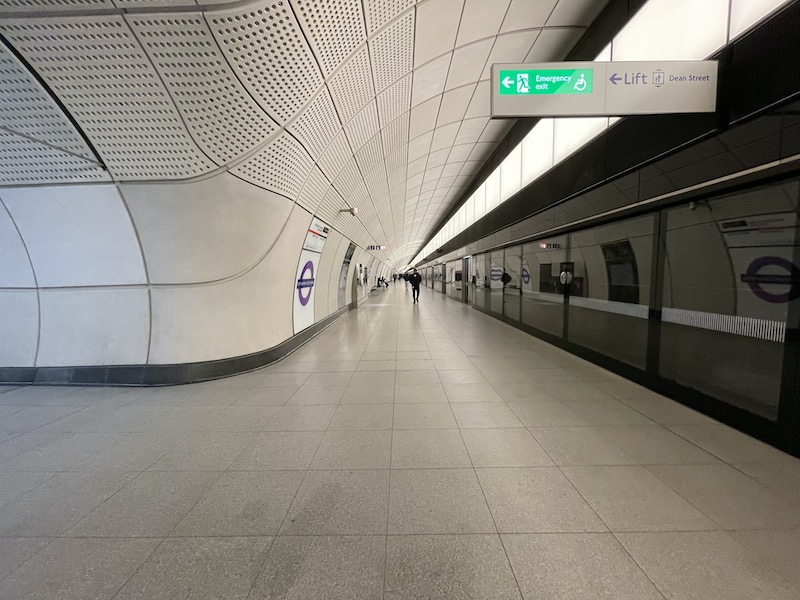
I always try and do much of the walk, if appropriate, at the originating station or on the train itself if not too crowded. Only because I’m funny about things like that.
Watch out for Britain’s sixth Busiest Railway Station next month.
Roger French
Previous blogs in this Britain’s Busiest Railway Stations series: No 10 Euston; No 9 Farringdon; No 8 St Pancras International.
Blogging timetable: 06:00 TThS
Comments on today’s blog are welcome but please keep them relevant to the blog topic, avoid personal insults and add your name (or an identifier). Thank you.

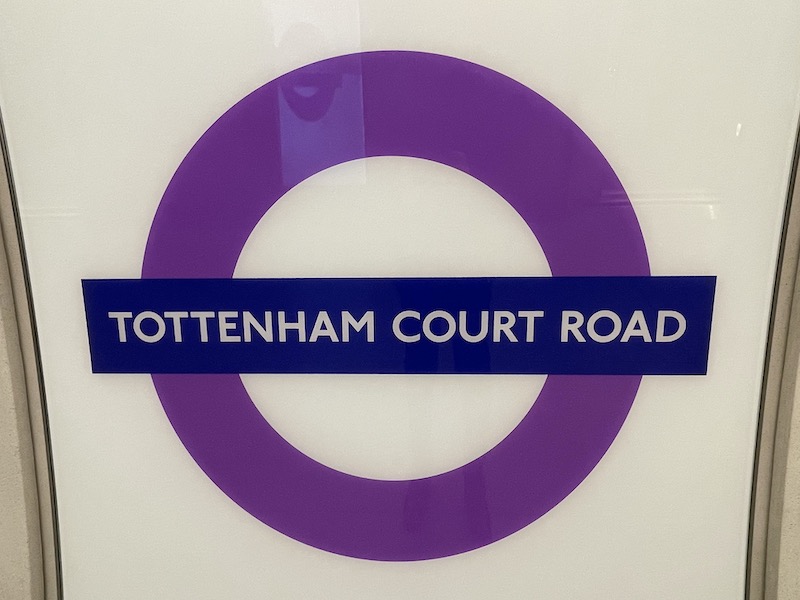
is it not the eighth next month???
nice, clean pics without people!
LikeLike
Going by the pictures here seems to be a distinct lack of passengers
LikeLike
Regarding embarking an Elizabeth line train at the carriage which will stop nearest the exit on your platform’s destination, there was a book written by a cricket commentator (in the 1950s?) describing that for every underground station. Has anyone done it online for the Elizabeth line stations yet?
LikeLike
Diamond Geezer has, I think – you’ll need to search his blog (worth reading).
LikeLike
I boost the numbers (slightly) because I was recommended to change there
LikeLike
If you cannot buy a national rail ticket to it , then should it be in National Rail stats ? (though effectively divide by 50percent and add each to PAD and LIVSt ?
Would NR stats be better to look at for top 10 excluding London (though we loose then longstanding Clapham Junction and East Croydon – perhaps if we exclude London stations with a Tube connection ?)
For best place to attempt to board for the Tube services Geoff Marshall did an app – dont know if it has been updated as the change to Bank exits and newer subways at Kings Cross have changed things a bit. In peak hours you have to factor in how easy it is to walk against often crowds of people coming the other way , getting out further away , on EL and getting to the less crowded centre areas may make your end walk longer, but it can be quicker. Same at Clapham Common, you want to be mid section away from the big upward flow to tag onto the end before the next train comes in
JBC Prestatyn
LikeLike
You may not be able to buy an NR ticket that is specific to this particular station, but you can buy such a ticket that is valid to it and to others in the same zone.
TCR is served by a National Rail service (the Elizabeth line) hence many of its passengers will be using NR and its inclusion in NR stats (similarly for stations served by the Overground).
LikeLike
At a mere c35,000,000 passengers, must be a Primark outside,
LikeLike
Actually there is !! 14-28 Oxford St.
LikeLike
You say that “you can’t buy a single or return ticket to it from any other National Rail station”. That may be true at ticket offices, but both the Great Western and Transport for Wales websites allow one to buy a ticket from my local station (Llanishen) to TCR in the normal way.
Andrew Kleissner
LikeLike
Have you actually bought one? Because I think what actually happens is that the ticket is issued to London Zone 1 (or whatever the current wording is) rather than the specific station you chose.
It’s just easier for the average customer to select the station they want rather than having to know about London fare zones.
A. Nony Mouse
LikeLike
I thought most modern rolling stock have onboard passenger counting devices. That way they’d be able to estimate leavers and joiners at each station
LikeLike
I suspect that those interesting lights will be LEDs, and therefore changing them will not be such an issue as in the past (though they won’t last forever!).
LikeLike
This could be a challenging Requirement, How you deliver on that I don’t know
TfL seeks tenders for passenger-counting solutions
“The primary objective of this project is to generate and make live bus crowding data available to bus passengers for better decision-making and empower them to feel ‘in control’ of their journeys.”
TfL says accurate live passenger data would enable passengers to make decisions about their journey and prepare them for what to expect, inform service controllers and planners, enable traffic light-control systems to favour crowded buses; and give drivers an indication of the crowdedness of their bus when their view is obscured.
The information required as part of the scope of the project is: number of passengers boarding at a stop; number of passengers alighting at a stop; number of passengers on the bus (occupancy on departure of the bus from that bus stop); loading (the total occupancy as a percentage of capacity); occupancy of wheelchair area (occupied/available); type of occupant in the wheelchair area.
LikeLike
When I started at Liz line, as part of the corporate introduction, we had a visit from the people involved with adhering to TFL standards. They advised that all lights would be replaced at a set time to avoid any failures which would have cost the company a penalty from TFL.
LikeLike